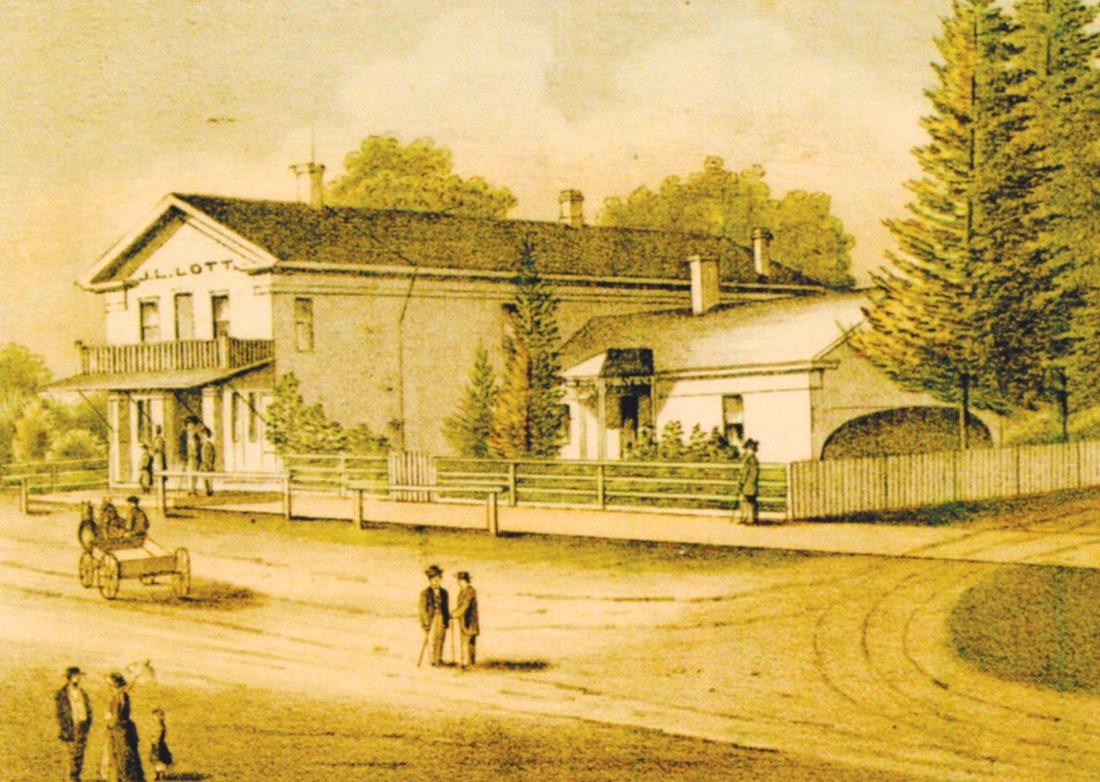Lifelong resident Martin tells the story of Lottsville
- Photo from book “the History of Lottsville, Pennsylvania 1815 – 2015 Frame schoolhouse used in late 1800s up to 1909 when brick structure replaced it.
- Photo from book “the History of Lottsville, Pennsylvania 1815 – 2015 The railroad depot and the Lottsville Milling Company, about 1920.
- Photo from book “the History of Lottsville, Pennsylvania 1815 – 2015 Railway underpass behind the Lottsville Miling Company which was used when trains blocked the main road build in 1906.
- Photo from book “the History of Lottsville, Pennsylvania 1815 – 2015 Brick schoolhouse build in 1909.
- Photo from book “the History of Lottsville, Pennsylvania 1815 – 2015 The residence and store of James L. Lott as it appeared in 1878.

Photo from book “the History of Lottsville, Pennsylvania 1815 - 2015 Frame schoolhouse used in late 1800s up to 1909 when brick structure replaced it.
Donald Martin has been a lifelong resident of Lottsville. In honor of the village’s bicentennial in 2015, he composed a more-than-60-page book that details the history and captures the community spirit of his hometown.
While the book contains many more stories than can be told here, it was the obvious source for the story of how the village got its name.
Lottsville was founded by Harmones Lott, a farmer from Flatbush (now Brooklyn) Long Island, New York. He bought 1,321 acres from the Holland Land Company dated Feb. 1, 1810. The deed was issued on Aug. 3, 1816. The purchase price was listed as $1,783.67.
The land Lott purchased had a name and plans of what it could look like, but in 1815 there was just one small cabin in what was called Sackettsburg. Sackettsburg was a town on paper until Lott arrived.
Sackettsburg had been named for Judge Augustus Sackett. He promoted the area, using terms such as “salubrious” and referred to “abundant” and “excellent” water. But his plans never got off the ground.

Photo from book “the History of Lottsville, Pennsylvania 1815 - 2015 The railroad depot and the Lottsville Milling Company, about 1920.
Lott was a doer. He changed the name and adopted Sackett’s vision. By 1820, Lottsville had 33 residents living in four households.
As the town took shape, he stuck to Sackett’s plan for wide streets. That vision is still evident as many homes are not located close to the road.
The resident of that original Sackettsburg cabin stayed and took an active role in the growing community. Rufus Fitch was a veteran of the Revolutionary War who by trade was a shoemaker. Fitch arrived in 1815 as part of a deal with Sackett, who promised a half-acre to any tradesman willing to settle there. About a year later, he brought his wife and daughter to the village.
Fitch’s wife taught the first school in Lottsville in 1817. The following year, Rufus taught the school.
As was common to the area at the time, ample timber provided a living for many area residents. With that in mind, the Lotts built a dam on Little Brokenstraw Creek just south of Lottsville. Unfortunately, the dam flooded more than 400 acres. It was dynamited in the spring.

Photo from book “the History of Lottsville, Pennsylvania 1815 - 2015 Railway underpass behind the Lottsville Miling Company which was used when trains blocked the main road build in 1906.
The Little Brokenstraw Creek became a popular site for sawmills. There were five between Lottsville and Wrightsville at one point in time.
Lott’s oldest son, Hewlett, hoe his entrepreneurial skills in the growing village. Some time prior to 1826 he opened a general store. He was also appointed Lottsville’s first postmaster on Jan. 4, 1828.
Lott was born July 6, 1766 to Abraham and Janette Hendrickson Lott. His great-grandfather, Pieter Lott, came to this country from Holland in 1652. He and his wife, Hannah, had nine children.
Warren County was not organized until 1819, so in 1815 the area was part of Venango County. Once the county was organized, Lottsville became part of Brokenstraw Township. As time went on it became part of Sugar Grove Township and in 1833, became part of Freehold Township.
“The History of Lottsville, Pennsylvania 1815 – 2015” is available for purchase at W. Martin Accounting, 310 Lottsville-Niobe Road, Bear Lake or the Warren County Historical Society, 210 4th Ave., Warren.

Photo from book “the History of Lottsville, Pennsylvania 1815 - 2015 Brick schoolhouse build in 1909.

Photo from book “the History of Lottsville, Pennsylvania 1815 - 2015 The residence and store of James L. Lott as it appeared in 1878.





